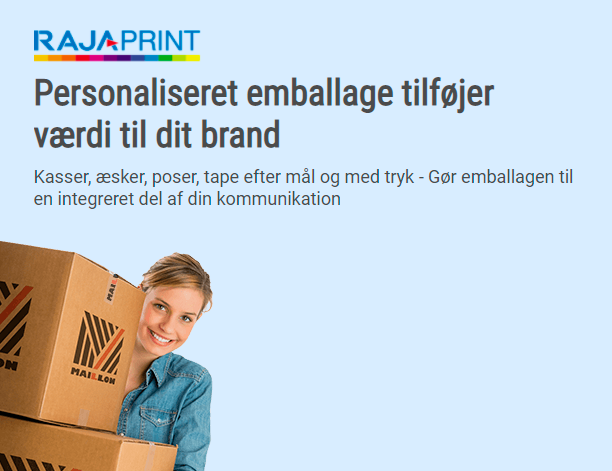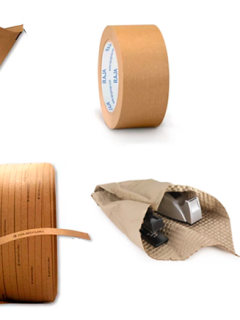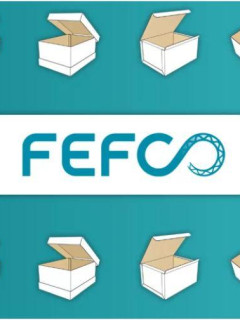If you sell wine and bottles in general in your webshop, you probably also know how fragile they can be and that they require the right packaging. Here we give our guide to your bottle shipments. In this guide, we talk from the perspective of our range and what we offer. Enjoy!
The ideal wine packaging:
Step 1: Research the requirements of your distributor
The first thing you need to research when packaging wine is the requirements of the carriers you use.
It is usually the case that if your package is not packaged properly and damages other packages, you will be responsible for damage and cleaning. So it’s important to know the rules.
We have researched and found 2 useful links from 2 of Denmark’s most frequently used distributors. The two companies are very much in agreement on how a wine bottle should be packaged:
GLS: Proper packaging. Wine and liquid contents.
In this PDF, GLS briefly explains how they would like each bottle to be packed in a sealed bag to avoid waste. You need to remember both inner and outer packaging – the bottles must not be able to move.
POST NORD: Packages that go the distance.
Post Nord has the same attitude and in their PDF they write briefly:
Pack bottles individually in a waterproof bag before packing in a sturdy shipping box with shock-absorbing material – preferably with a good compartment divider. Make sure that the packing material surrounds the contents so that the bottles do not lie loose.
Step 2: Buy the right packaging
Based on distributors’ requirements, the right packaging might look like this:
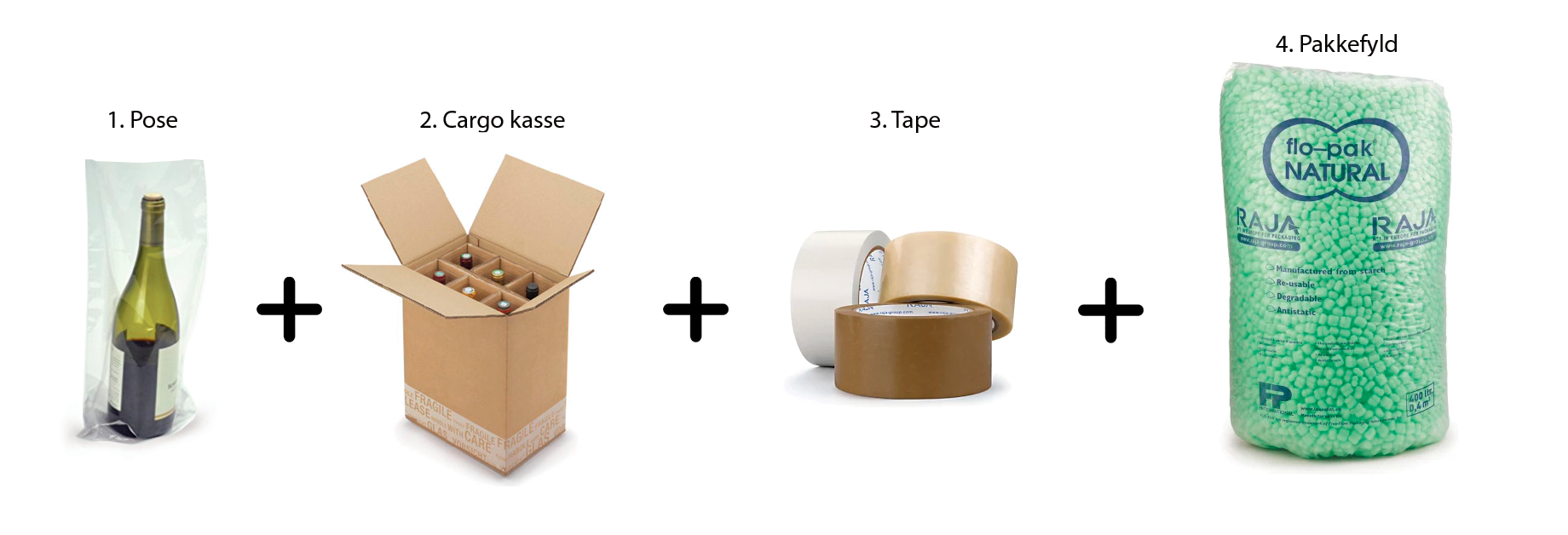
- 1: Pack them individually in a plastic bag. The plastic bag should be at least 150 mm in the opening and 400 mm high (150×400). We have had success with this bag, it is 250×400 mm. The bag can be sealed, taped or closed using bag closers.
- 2: Choose an approved box like this Cargo box. The Cargo box is the one we always recommend when customers approach us. It is approved for courier deliveries and has all the outer and inner packaging that carriers require. It is a heavy duty crate where each bottle ends up being protected by 4 layers of corrugated cardboard and at the same time it has a compartment divider.
- 3: Use a durable tape, either PVC or PP Low Noise. It is important that the box is closed securely so that the joints do not break.
- 4: Last but not least, if you want to be COMPLETELY sure that your bottles can’t touch themselves, fill it with Flopak. Here, we recommend the eco-friendly variety that’s made from cornstarch and can be dissolved in water – it leaves no toxic waste and fills any voids easily and simply.
Is your crate of bottles going on a “solo journey” or will it need to be palletised and stored?
If your package of wine is going out and being handled individually, we recommend the above solution. On the other hand, if you are loading a pallet with many packages, we recommend the following:
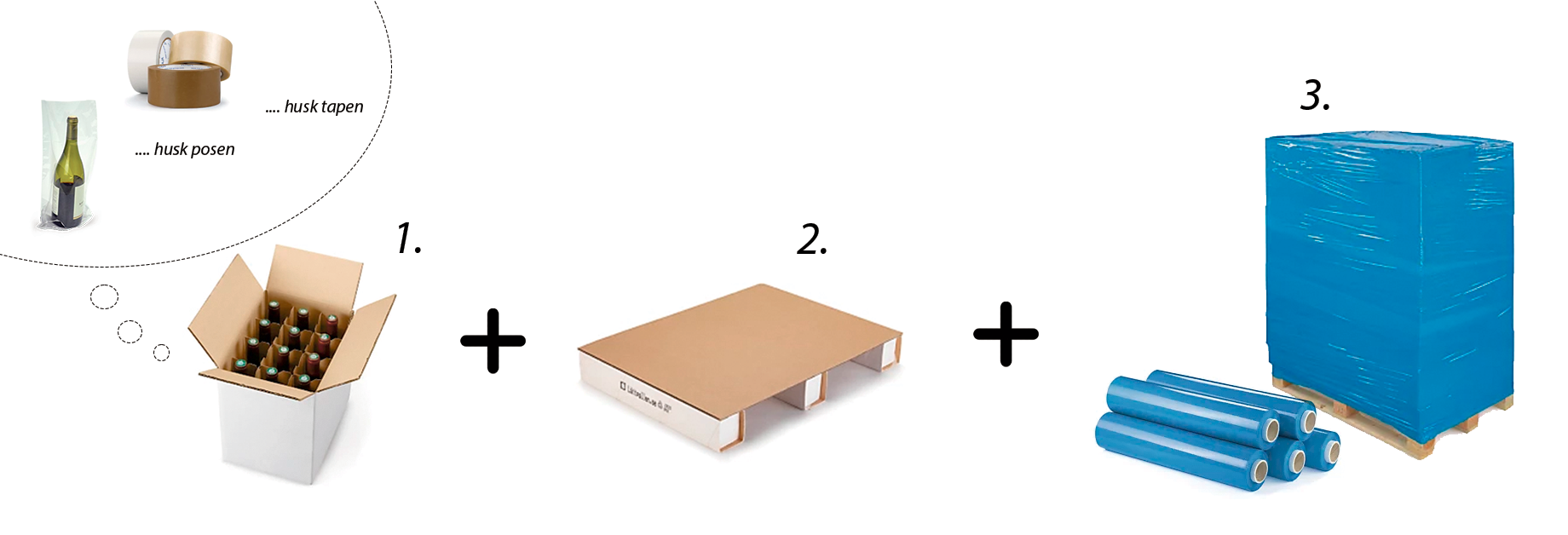
The price of this box, as you see in the picture, is more friendly when exporting many boxes at once. If a pallet is loaded correctly (read the post on palletising), it is extremely robust – and it is subject to different handling than a single package.
- 1: Bottle packaging for palletising: box with white exterior and with upright or horizontal compartmentation. This is a crate that is good for palletising wine. It keeps the bottles separated and there is the possibility to fill the box with Flopak if you wish. The box meets the requirements for outer and inner packaging.
- 2: Pack on a pallet: As a rule, all pallets can be used. See our range here. Remember to load the pallet correctly – it is important so that the weight is distributed. Read our post on palletising here.
- 3: Reinforce your pallet loads: finally reinforce the pallet with stretch film, it keeps the boxes together and makes the pallet more homogeneous and easy to move. Coloured stretch film can usually be an advantage as it hides the contents and further eliminates sunlight.
REMEMBER: – There are differences from carts to carts how they transport. Likewise, there are also differences between car, train, plane and sea transport. Always check the requirements of each company.
How do you gift wrap bottles?

As a general rule, we do not recommend exporting wine that is already gift-wrapped. If this is the case, remember that the above requirements still apply.
Instead, you can do the following:
- Include the gift packaging in the shipment, allowing the supermarket, or other wholesaler, to pack the bottles themselves and place them on the shelf.
- The possibility of having custom-made gift packaging/displays that meet the requirements is an option. However, this requires a large quantity, otherwise the unit price becomes expensive.
- Another option is to investigate the possibility of special courier services that handle the packages individually and “nicer”. The big carriers sort all their parcels on conveyor belts, etc. – i.e. parcels change hands and belts many times. This is not gentle handling. It is also why they recommend the packaging that they do.
Below you can see a selection of wine gift packaging options to include with your deliveries:
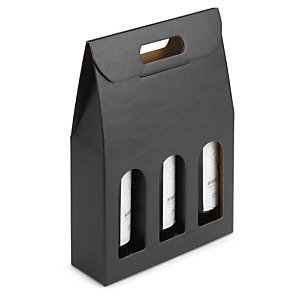
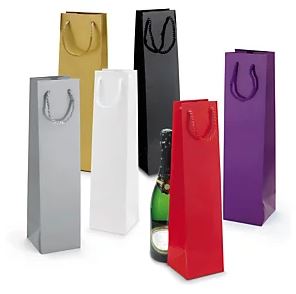
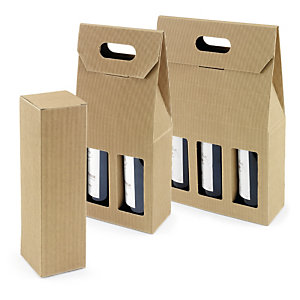
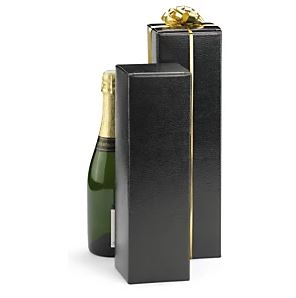
Should you need further guidance, please contact our packaging specialists, they are ready to help so you can find the right solution for you and your business.
Our packaging specialists can be contacted via: 44 77 58 00 | info@rajapack.dk | Live chat.
Also follow us on social media where we provide useful tips for your packaging and sign up for our newsletter where you will receive news and exclusive promotions directly to your inbox:
- Subscribe to our newsletter.
- Follow RAJA Denmark on social media: LinkedIn, Facebook.
- Get our product catalogue at home or read it online where you can add the products to your basket directly from your reference book.
Pack bottles individually in a waterproof bag before packing in a heavy-duty shipping box with shock-absorbent material – preferably with a good compartment divider. Make sure that the packing material surrounds the contents so that the bottles do not lie loose.











